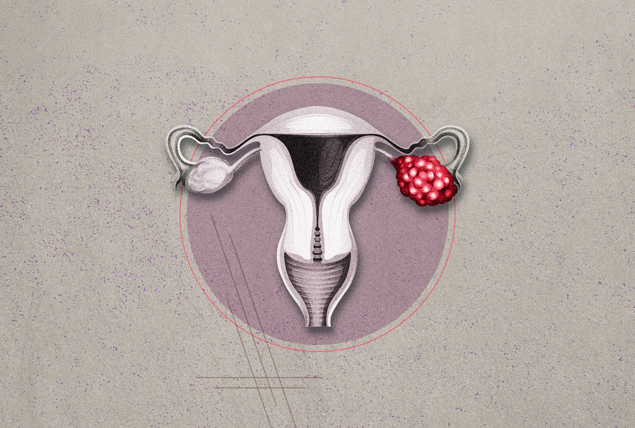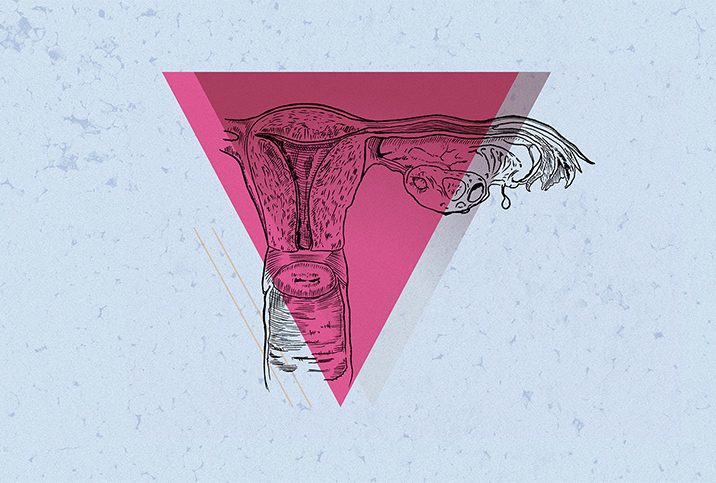Do You Know the Ovarian Cancer Risk Factors?

Ovarian cancer refers to cancers that originate on the ovary or fallopian tubes or in the peritoneal cavity. These cancers begin when cells grow and multiply quickly, destroying healthy tissue and eventually spreading to other parts of the body when left undiagnosed and untreated.
There is no effective screening for ovarian cancer because it is often asymptomatic in its early stages, making it difficult to catch, according to John P. Diaz, M.D., the chief of gynecologic oncology at the Baptist Health Miami Cancer Institute.
"Due to a lack of screening [options], ovarian cancer is often diagnosed at an advanced stage," Diaz said. "This means that the cancer has spread beyond the ovary."
If the cancer cells have metastasized (spread) to other organs within the abdominal cavity, it can then lead to physical symptoms, Diaz said.
The symptoms of ovarian cancer may include the following:
- Feeling full early when eating
- Unintended weight loss
- Abdominal and pelvic pain
- Changes in bowel habits
- Changes in urination
- Abnormal bleeding and fatigue
Clinicians recognize a variety of different tumor types and ovarian cancer subtypes. The most common tumor type is adenocarcinoma. The most common subtype is serous adenocarcinoma—most of which are high-grade tumors, meaning they grow aggressively, according to the Centers for Disease Control and Prevention (CDC).
Ovarian cancer stats
About 19,710 people in the United States will receive a new diagnosis of ovarian cancer in 2023, and about 13,270 will die from the disease, according to American Cancer Society (ACS) estimates.
Ovarian cancer is the second most common gynecologic cancer—it follows uterine cancer—but it is the deadliest gynecologic cancer for a couple of reasons. It is predominantly asymptomatic and physicians lack effective screening tools.
Women have a 1 in 78 chance of developing ovarian cancer during their lifetime, while the risk of dying from it is about 1 in 108, according to the ACS.
"While ovarian cancer often presents at an advanced stage, it remains a treatable disease, with nearly 85 percent of diagnoses that present at an advanced stage entering remission following their primary therapy," Diaz said.
Ovarian cancer risk factors
Certain factors, such as older age and genetic predisposition, could put someone at a higher risk of developing ovarian cancer.
People from the ages of 80 to 84 have the highest chances of developing the disease, according to CDC data. Ovarian cancer is also more common in white people than in Black people.
Women and people assigned female at birth with known genetic syndromes—mutations in the breast cancer susceptibility genes BRCA1 and BRCA2, and gene mutations associated with Lynch Syndrome, for example—may have an increased risk. Early menarche or late menopause might also play a role, Diaz said.
The rate at which people are diagnosed with ovarian cancer has been slowly falling over the past 20 years, the ACS suggested. The age-adjusted rate of new ovarian cancer cases was 13.6 in 100,000 women in 2003, according to CDC data. By 2019, it had fallen to 9.9 in 100,000.
Treatment and prevention of ovarian cancer
A gynecologic oncologist experienced in the treatment of ovarian cancer is the best person to manage treatment, Diaz said.
Treatment options include cytoreductive surgery and chemotherapy. The latter is recommended for nearly all patients except for those with very early-stage disease. With cytoreductive surgery, the goal is to remove all visible cancerous tumors.
"Therapy is often tailored based on the patient's genetic factors as well as the genetic makeup of the tumor itself," Diaz said.
No effective screening methods exist for ovarian cancer, but Diaz said there are some ways to decrease the risk of developing this disease. Genetic testing, for example, is important in determining risk levels.
There are different kinds of risk-reducing surgeries, which may be recommended for people with certain genetic syndromes.
Individuals with the BRCA1 or BRCA2 gene mutations, for example, might undergo an oophorectomy, a surgical procedure to remove one or both ovaries. At-risk individuals might also choose to have their fallopian tubes removed as a precaution.
The use of oral contraceptives for more than five years, Diaz said, can decrease the risk of developing ovarian cancer by up to 50 percent. Other potentially protective factors include the following:
- Breastfeeding
- Tubal ligation (having your tubes tied)
- Higher parity (the number of times someone has given birth)
In general, it is important to stay up to date with routine screenings, including annual physicals, abdominal exams and pap smears. If you experience any of the symptoms mentioned above, talk to your healthcare provider.


















